An investigation by the AFP news agency into a strike in southern Lebanon on 13 October that killed a Reuters journalist and injured six others, including two from AFP, points to a tank shell only used by the Israeli army in the high-tension border region.
Two strikes hit the group of journalists in quick succession as they were working near the border village of Alma al-Shaab, in an area that sees the Israeli army and armed Lebanese and Palestinian groups engaged in near-daily clashes.
Issam Abdallah, 37, was killed instantly.
The other journalists present, two other Reuters journalists, two from Al Jazeera, and two from AFP, were all injured.
AFP photographer Christina Assi, 28, was seriously wounded, and later had a leg amputated. She is still in hospital.
Journalist deaths since 7 October 2023
56 Palestinian
4 Israeli
3 Lebanese
Total: 63
(Source: Committee to Protect Journalists)
AFP jointly conducted a seven-week investigation with Airwars, an NGO that investigates attacks on civilians in conflict situations.
The inquiry was based on evidence gathered from expert munitions analysis, satellite images, witness testimonies and video recordings filmed before and during the attack.
Its evidence points to a 120-milimetre fin-stabilised Israeli-made tank round, which is only used by the Israeli army in the region.
The probe indicates that the strikes came from the southeast near the Israeli village of Jordeikh where Israeli tanks were operating.
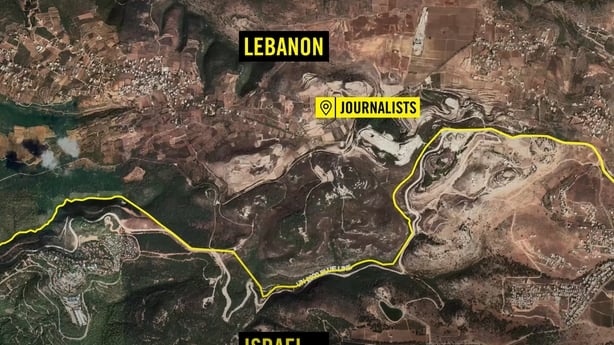
The nature of the strikes and lack of military activity in the vicinity of the journalists, combined with Israeli aerial surveillance resources, indicate it was a deliberate and targeted attack.
These findings are supported by separate investigations conducted by rights groups Human Rights Watch (HRW) and Amnesty International.
HRW concluded that the strikes were "apparently deliberate attacks on civilians, which is a war crime" and which "should be prosecuted or may be prosecuted for war crimes".
Amnesty said the incident was "likely a direct attack on civilians that must be investigated as a war crime".
Warning: Video contains graphic and distressing content
An Israeli military spokesman said after the strike: "We are very sorry for the journalist's death", adding that Israel was "looking into" the incident, without taking responsibility.
Israel has also repeatedly said it does not target journalists.
Two successive strikes hit the group of journalists at 6.02pm local time as they were positioned above Alma al-Shaab, a village located around a kilometre from the "Blue Line", the UN-monitored demarcation line between Lebanon and Israel.
Lebanon's Hezbollah and local branches of Hamas and Palestinian Islamic Jihad had been exchanging fire with Israel on a near-daily basis across the border since Gaza-based Hamas fighters carried out their attacks on 7 October.
More than 110 people have been killed on the Lebanese side, mostly Hezbollah fighters, as well as more than a dozen civilians, according to an AFP tally.
Israel has said that six of its soldiers have been killed.
Timeline of events - 13 October
- 5pm: The seven journalists arrive at the scene, positioning themselves on the top of a small hill.
- Shortly after 5pm: Christina Assi posts a video to her Instagram account showing all journalists equipped with helmets and bulletproof vests marked 'Press'.
- Just before 6pm: AFP cameras are turned towards the west to capture the scene.
- 6.02pm: The first strike hits the journalists, instantly killing Issam Abdallah and seriously wounding Christina Assi.
- 37 seconds later: A second strike on the area hits the Al Jazeera car located nearby.
The seven journalists were at the scene for around an hour before they were hit, positioned on the top of a small hill that offered a wide vantage point to film the Israeli bombardments that had intensified that afternoon.
The Israeli army has confirmed that it was carrying out artillery attacks in response to an infiltration attempt.
Al Jazeera journalists Carmen Joukhadar and Elie Brakhya were first on the scene, followed by AFP's Dylan Collins and Christina Assi, and Reuters correspondents Issam Abdallah, Thaer Al-Sudani and Maher Nazeh.
All were equipped with helmets and bulletproof vests marked "Press".
They were standing behind cameras placed prominently on tripods, as shown in a video shot by AFP's Assi on her phone and posted to her Instagram shortly after 5pm.
Journalist killed instantly
The first strike hit at 6.02pm. It killed Abdallah instantly and seriously wounded Assi.
"What happened? What happened? I can't feel my legs." That's what Assi is heard repeatedly screaming on the video footage.
Collins said: "We had spent about an hour filming a distant pillar of smoke to our south, and some limited Israeli shelling along hilltops to our southeast.
"Just before 6pm we turned our cameras towards the west and suddenly we were hit. It came out of nowhere."
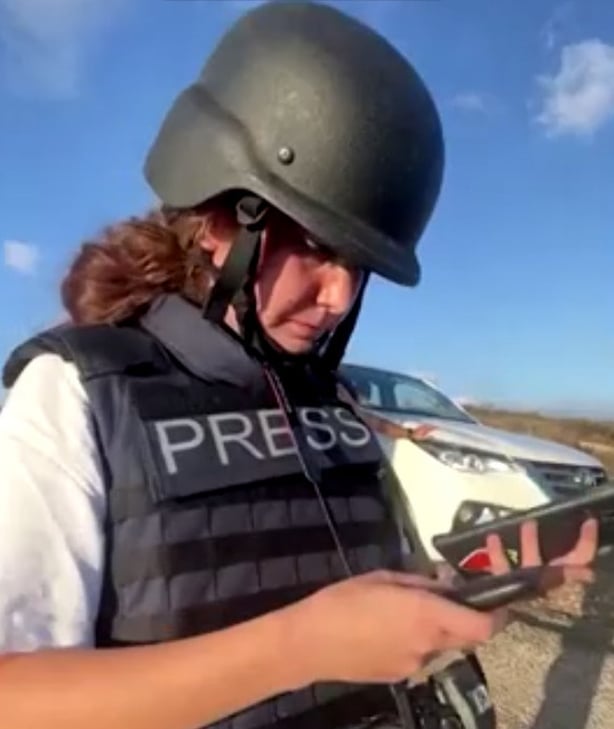
"We were in an exposed area, all of us wearing our helmets, our vests, just doing our job ... and we were maintaining a safe distance from the frontline," said Assi.
"Suddenly, everything became white ... and I lost sensation in my legs, and I started crying for help."
Collins attempted to provide her with first aid, but 37 seconds later, a second explosion occurred, hitting the Al Jazeera car located a few metres away.
Collins, who had been attempting to place tourniquets on Assi's legs, was wounded.
All the witnesses at the scene insist there was no military activity or artillery fire in their immediate proximity.
The Al Jazeera vehicle hit by the second strike was destroyed by fire.
The body of Abdallah, who was directly hit by the first strike, was thrown into a field on the other side of a stone wall near which he had been standing.
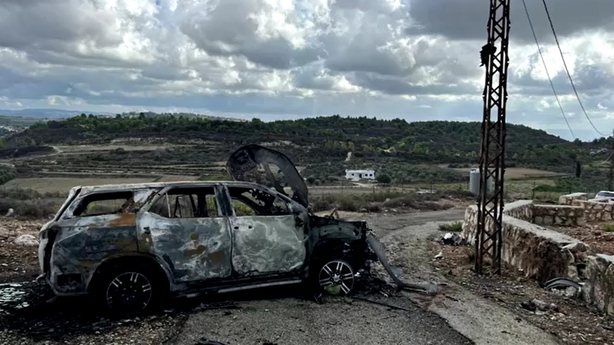
It was an Israeli tank shell - experts
A large munition fragment was filmed close to Abdallah's body immediately after the strike.
The day after, a local resident, who did not wish to be named, recovered the fragment and took photos of the scene.
AFP and Airwars had them analysed by six weapons experts, including former British army officers and experienced conflict zone investigators.
All agree that it was part of a 120mm fin-stabilised tank shell, typically used by the Israeli army on its Merkava tanks.
No other military group or organisation in the region uses this type of munition, the analysts said.
"This is the remnants of a tank round, clearly from a Merkava tank," said one of the experts, Chris Cobb-Smith, a security consultant and former British army artillery officer.
"It's quite obvious to me because you can see the grooves on the round itself, which indicates it comes from the fin-stabilised family of munitions.
"When fired, some fins spring out of the back of the round [to] stabilise it in flight, which makes it much more accurate and increases its range," added Cobb-Smith, who has experience with this type of munition, including with fragments found during the 2008 and 2012 wars in Gaza.
Independent investigations by HRW and Amnesty International also pointed to the use of a 120mm tank shell of Israeli origin.
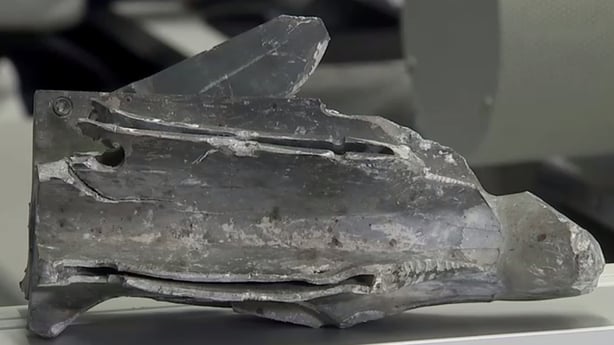
The investigation identified at least two Israeli positions from which shells were being fired that afternoon.
According to experts who spoke to AFP and Airwars, the most likely source of the strike that hit the journalists was a position to the southeast, near the Israeli village of Jordeikh.
At the time of the strikes, the journalists had their cameras pointed southwest, toward a base near the Israeli town of Hanita and their footage does not capture the projectile that struck them.
They were hit from the side - not from the front - as indicated by the orientation of the debris from the wall near Abdallah, which spread from east to west over around ten metres.
Earlier footage indicates an Israeli position near Jordeikh.
Around 45 minutes earlier, the AFP camera was pointing in this direction and caught the sound of at least one shot, followed by a plume of smoke rising from this location.
Satellite images from that morning and the following day, seen by AFP, show the presence of vehicles with the same dimensions as a Merkava tank very close to Jordeikh.
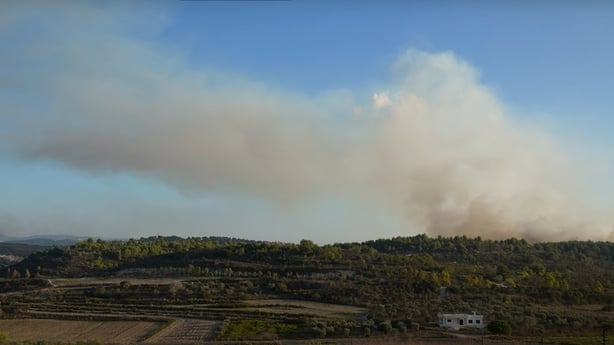
Targeted strikes
The experts agree that the two strikes occurred 37 seconds apart, landing only four or five metres from each other, excluding the possibility of an accidental attack.
"Anyone who suggests this was an accident or mistake would have a lot of convincing to do," said Cobb-Smith.
"One round clearly hit the cameraman directly, and the second round hit their vehicle ... So I think we can discard the [idea] that this is in any way a random shot, or an unlucky shot," added Cobb-Smith. "In my assessment those individuals were targeted."
The investigation sought to establish whether the journalists could have been mistaken for fighters belonging to one of the armed groups active in the region.
Cobb-Smith said this was unlikely given "the sophistication and the capabilities of the surveillance assets of the Israeli army".
The journalists "were not operating in a military style", he added.
"They were standing out in the open, they had cameras on tripods, they were operating overtly, so one has to question why they were engaged by an armament of this capability."
Amnesty's investigation found the journalists had taken all necessary precautions to identify themselves.
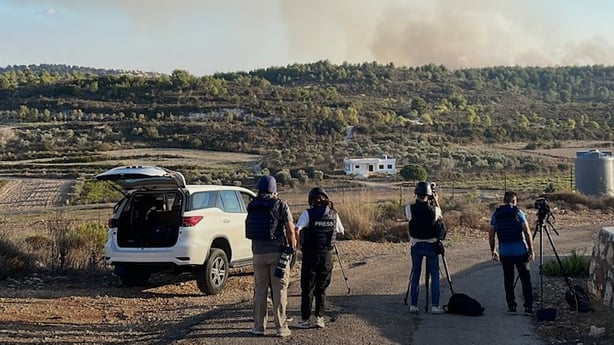
"The Israeli military either knew or should have known that the seven individuals were journalists.
"Yet they still targeted them not once but twice, and therefore Amnesty is saying this is likely a direct attack on civilians and must be investigated as a war crime," Aya Majzoub, Amnesty's deputy regional director for the Middle East, told AFP.
Several similar incidents have taken place in the region in recent weeks as journalists broadcast live footage of clashes with Israel.
A spokesperson for Reuters said it was "shocking that a group of clearly identified journalists could be hit by fire in this way".

The news agency reiterated its appeal to the Israelis to conduct their own probe.
"It has been nearly two months since we called for them to investigate, and we have heard nothing since."
"About as many journalists have died in the past two months as were killed in the entire 20 years of conflict in Afghanistan," said AFP Global news Director Phil Chetwynd.
As of 6 December, the Committee to Protect Journalists said at least 63 journalists (56 Palestinian, four Israeli, and 3 Lebanese) and media workers had been killed since the start of the war on 7 October.







